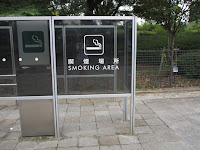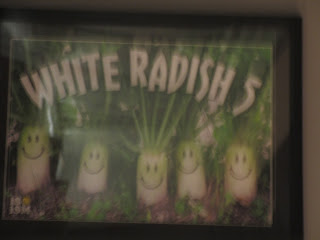One of my first posts was a description (stages) of how it felt to prepare to move to a new country. What I did not anticipate was how many stages of adjustment I would have to go through after I arrived. They say that moving to a new culture has three basic stages:
Excitement when everything is still new and exotic,
Frustration when homesickness and exhaustion set in, and
Conformity when a person assimilates to the new culture and enjoys it for what it is. I think the lines between these three are blurred and, at least for me, can be split into many more, smaller stages.
Before you read my list, especially if you have never lived abroad, I do not want this to discourage you from doing so. I am truly happy in my new home and would (and probably will) move to foreign country again because it is fun as well as challenging. It has made me a stronger person and I like who I have become as a result of it. However, do not let anyone lie to you, moving to another country has been the hardest thing I have ever done, harder than writing a thesis (in a very different way).
1. The Flood:
Swept away by the emotions and experiences of jet-lag and moving, I was just trying to stay afloat. I was not concerned about faux pas, just the basic necessities. Literally, I just needed to stay alive.
2. Overwhelmed:
By about two weeks into my move I was still more concerned with staying alive than fitting in, but this time I was also enjoying the adventure of it all. I started taking long walks just to explore. One trip to the grocery store down the street could turn into a day-trip full of unexpected occurrences. It was a sensory and information overload and it started to feel overwhelming at this point because I was beginning to realize just how hard this move and adjustment would be.
3 Going Under:
This stage in the move did not feel so much like being overwhelmed as it just felt like I had no time. Looking back, I know that my constant stress level was through the roof and there were a million things to do and learn before survival became easier. It wasn't until after this stage that my friends said they say that they saw me smile - really smile - for the first time since moving.
4. Folly of False Confidence:
That little bit of confidence that allows you to try something new which results in utter and embarrassing failure? yeah.
5. Overwhelmed:
Yup, again.
Believe it or not, moving can make you feel overwhelmed a lot. This time when I felt overwhelmed I submitted to the feeling instead of distracting myself with things to do. When I felt the intense anxiety and confusion of culture shock (and confronting even mundane, daily tasks in a foreign language can bring that on ... including asking for help) I turned to isolation activities like Netflix and reading.
So I sequestered myself in my house.
Taking time away from culture shock can be good, and relaxing alone is necessary too. But the degree to which I did this was not good.
6. Recognition:
This is the point when I finally realized that I was running and hiding from the outside world. Before then it was an unconscious response, not a intentional decision. This is the point when I went into a lot of deep reflection, thinking, journaling, talking it out with friends, and generally getting to know myself better. I put a name to my anxieties and fears, prayed about them, and was finally able to confront them. Step 5 was definitely worth taking for me because the depth of isolation led to recognition in a way that would have been impossible without it. God gives us depths so that He can show us how far He has brought us. This stage made me realize again how hard moving was (like 2 and 4), how great it is, and allowed me to reassess where I had been and where I am going. For me this stage first started around the 3 month mark.
7. Testing Tendril:
The recognition stage gave me a new determination and motivation. It convinced me that the embarrassment and general discomfort of learning a new language and how to live in a foreign country is worth while for the new knowledge. Some anxiety is just part of life.
So here goes nothing... a little bit at a time.
8. Reinforcement:
Because I am reaching out, I am growing. I do not always feel the growth at the time but I can look back and see the growth through hindsight. The joy of accomplishing something, getting something right, understanding a foreign conversation... that is a joy that I hope you have experienced and will experience again. I have grown a lot and, in some activities, I am now completely comfortable where I felt lost and helpless a year ago.
Unfortunately, I cannot seem to stay in the confidence of step 8. Instead there seems to be an endless cycle of stages 5-8. Like the cycles of the mythical Wheel of Fortune, reaching the top means I will eventually fall down; striking bottom forces me to reach back up. Each cycle varies in time and degree. Sometimes it is completed in a few days and sometimes it is weeks, but the cycle goes on.
When I first arrived, I could not have described the stages this way. Life was too hectic and
I was still wading through the thick of it. However, looking back the peaks-and-troughs of emotional waves seem to break off into these distinct segments.
If anyone has moved internationally - or even from one city to another - have you felt any of these stages? Which ones did you feel most strongly? How long did the stages take for you and which ones seemed longer for you?





































